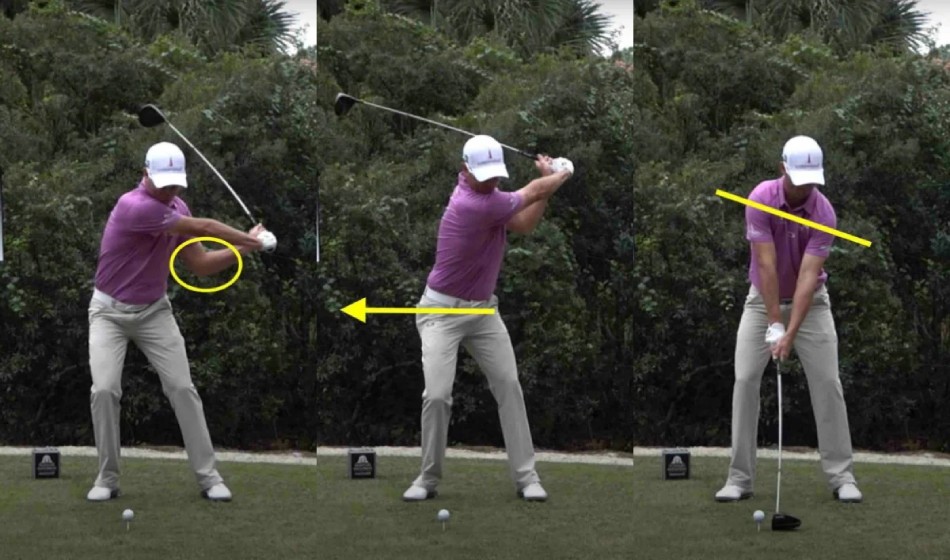
Mastering the Downswing for Accurate Golf Shots
17 de February de 2024
In golf, precision is the key to success, and mastering the downswing is essential to place the ball right where we want it. This movement can make the difference between a winning shot and one that leaves us out of the game. Here we will show you how to perfect your technique to achieve precise and consistent shots.
Understanding the mechanics of the downswing is crucial for any golfer looking to improve their game. It’s not just about strength, but about timing and fluidity. With practice and the right tips, you can adjust your swing to achieve results that will impress your playing partners.
We will focus on the technical aspects, but always with clear and accessible language. Join us on this journey to turn your downswing into a precise and powerful movement that will take you to the top of your game. Get ready to make every shot count!
What is the Downswing
The downswing is the critical moment in the golf swing where the magic happens. It is the phase in which, after reaching the highest point of the backswing, we start the downward movement towards the ball. Here, every muscle and every decision counts.
This stage determines the trajectory, spin, and power of the shot. A well-executed downswing can mean the difference between a shot that approaches the hole and one that ends up in the sand. Therefore, mastering it is essential for any golfer seeking precision and consistency in their game.
The technique is key. A downswing must be fluid and coordinated, maintaining the ‘lag’ or delay of the clubhead to maximize speed at impact. The sequence of movements should start with the hips, followed by the torso, arms, and finally, the hands.
Patience is your ally. A rushed transition from the backswing to the downswing can ruin the shot. Therefore, focus on a smooth and controlled change to maintain perfect rhythm and timing.
The downswing is not just a part of the golf swing, it is the decisive moment that can elevate your game to new levels. Understanding and perfecting it is our mission if we want to see tangible improvements on the field.
Technique for a correct and effective downswing
The downswing is the movement that defines the power and precision of your shot. To master it, synchronizing body and mind is crucial. Here we show you how:
First, keep your focus on the posture. A good downswing starts with a solid base. Make sure your feet are firmly planted and your weight distributed correctly, ready for the transition.
Then, remember to initiate the movement from the lower part of your body. The hips should rotate first, creating a whip effect that is transmitted to the shoulders and, finally, to the arms and the club.
Coordination is key. The movement of your arms should follow that of the hips, never the other way around. Think about keeping the left arm straight (for right-handers) as you begin the downswing. This will help you maintain the correct trajectory of the club.
Make sure your left wrist is firm. A flexible wrist can cause the club to lose control and hit the ball erratically.
Lastly, do not rush. An effective downswing is not about speed, but about the right rhythm and sequence of movements. Practice with patience and soon you will see how your technique improves significantly.
With these tips, your downswing will not only be correct but also tremendously effective. Remember that constant practice is your best ally to perfect every movement in golf.
Posture and grip adjustments
Achieving an effective downswing begins with proper posture and grip. We ensure that every movement flows naturally and precisely. Here we show you how to adjust your posture and grip for shots that will make a difference.
- The Posture: Start with your feet shoulder-width apart, balancing your weight between both. Lean slightly from the hips, keeping your back straight and your head upright. This position is your starting point towards a powerful and controlled downswing.
- Knee Flexion: A slight bend in the knees facilitates rotation and weight transfer. Imagine you’re ready to make a jump; that’s the amount of flexion you need. It will help you maintain balance and generate force from the ground up.
- The Grip: The position of your hands on the club is critical. Make sure the ‘V’ formed by the thumb and index finger of both hands points towards your right shoulder (if you’re right-handed). A firm but relaxed grip will allow the necessary freedom of movement for an effective downswing.
- Consistent Pressure: The pressure in the grip must be constant. Neither too strong to tense your arms nor too loose to lose control of the club. Uniform pressure is key to consistency in your shots.
With these adjustments, you’ll be on your way to perfecting that downswing you so desire. Remember, practice makes perfect. Dedicate time to each of these aspects and watch how your game improves.
Exercises to improve the precision of the downswing
The downswing is key to hitting the ball with precision and power. Here we present exercises that will help you perfect this essential movement in your golf game.
The “Whoosh Drill”: This exercise will help you create a better sequence in your downswing. Simply take your driver, invert it, and perform swings feeling the ‘whoosh’ sound right in the impact zone. This indicates a powerful and well-synchronized downswing.
Practice with a towel: Place a towel under your arms while performing the swing. This will encourage the connection between the arms and the body, improving consistency and precision in each shot.
Swings with one hand: Perform swings with one hand (first the right, then the left) to strengthen specific muscles and improve club control during the downswing.
The pause at the top: At the highest point of the backswing, pause before starting the downswing. This technique helps to improve synchronization and to avoid rushed movements that can divert the ball’s trajectory.
Integrate these exercises into your practice routine and observe how the precision of your downswing improves significantly. Consistency is the key to seeing lasting results in your game.
Analysis of common mistakes and solutions.
Incorrect posture: The foundation of a good downswing begins with proper posture. If your shoulders are too tense or your feet misaligned, this will affect your swing. Make sure to relax your shoulders and position your feet shoulder-width apart for optimal stability.
Grip too strong: An excessively strong grip can cause the clubface to close too quickly, leading to misdirected shots. Practice a soft and firm grip that allows greater control of the club during the downswing.
Starting the downswing with the shoulders: Many golfers begin the downswing with the shoulders, which causes a “casting” effect and reduces power. Start the movement from the hips, allowing the hands and arms to naturally follow to maintain power and precision.
Loss of balance: Balance is key in golf. If you lose balance during the downswing, your shot will be compromised. Focus on maintaining a low and stable center of gravity throughout the entire movement.
Movement of the head: Keeping the head still is essential for a consistent downswing. Excessive movement can divert attention and alter the trajectory of the shot. Practice keeping your gaze on the contact point throughout the entire swing.
Remember, practice makes perfect. Identify your mistakes and work on them consciously. You will see how your game improves significantly!
Perfecting the downswing is one of the keys to improving your game in golf. Remember, consistency and deliberate practice will lead you to execute more precise shots. There are no shortcuts to mastery, but with effort and patience, you will see a great evolution in your technique.
Do not be discouraged if the results are not as expected at first. Every shot is a learning opportunity. Keep an open mind to tips and do not hesitate to seek the guidance of an instructor if you feel you are not progressing as you would like.
Practice with purpose, focusing on each aspect of the downswing. From the initial position to the impact with the ball, every movement counts. Use videos of your practices to analyze your technique and make precise adjustments.
Remember, patience is your ally. Significant improvements in golf often take time. Celebrate the small victories and keep your passion for the game alive. With dedication and practice you will master the downswing and enjoy increasingly precise shots on the golf course.
Now it’s your turn to go out to the field and put these tips into practice. We are sure that with each swing you will be one step closer to becoming the golfer you aspire to be. Go for it!
